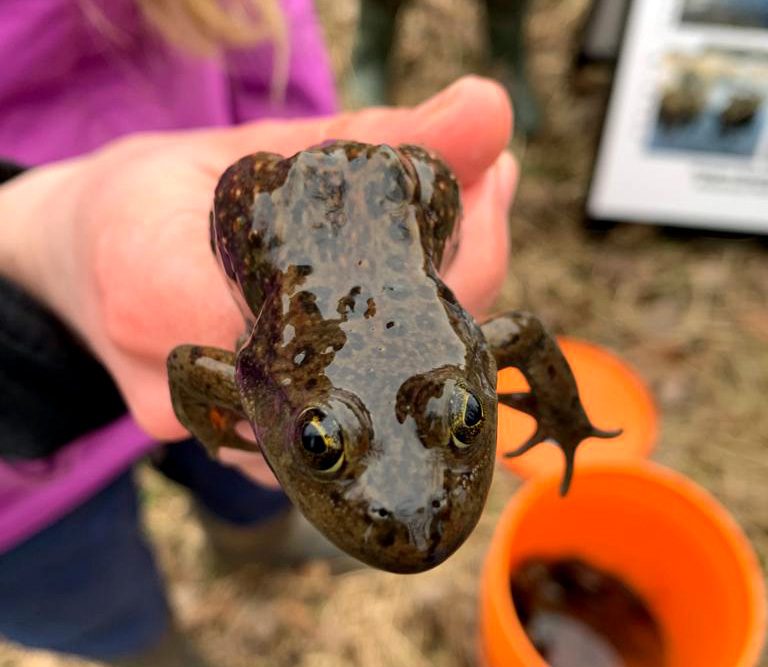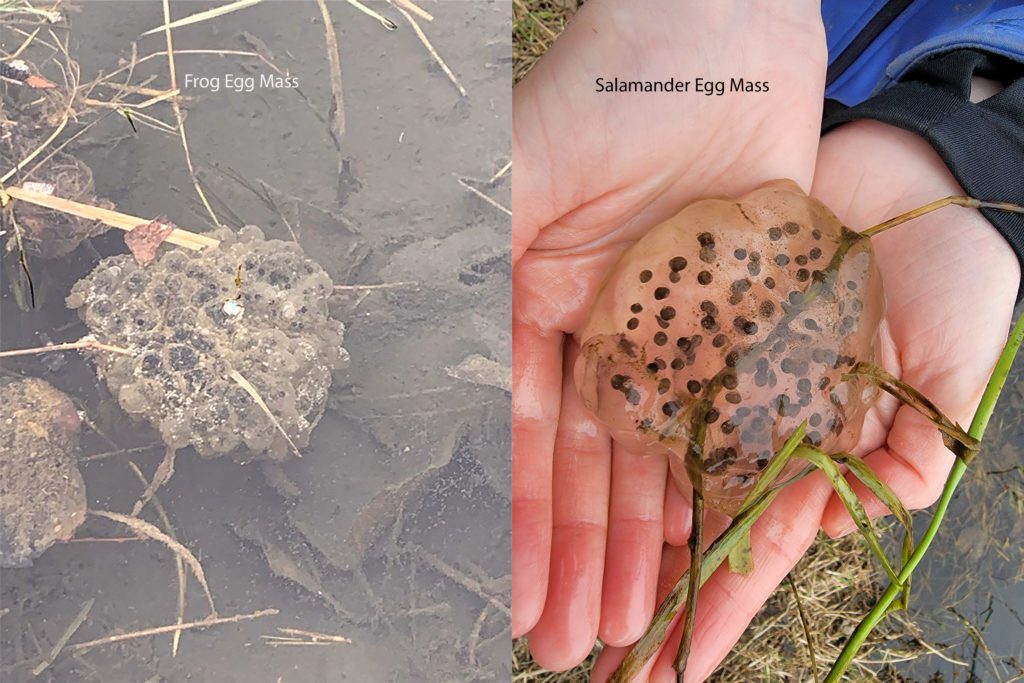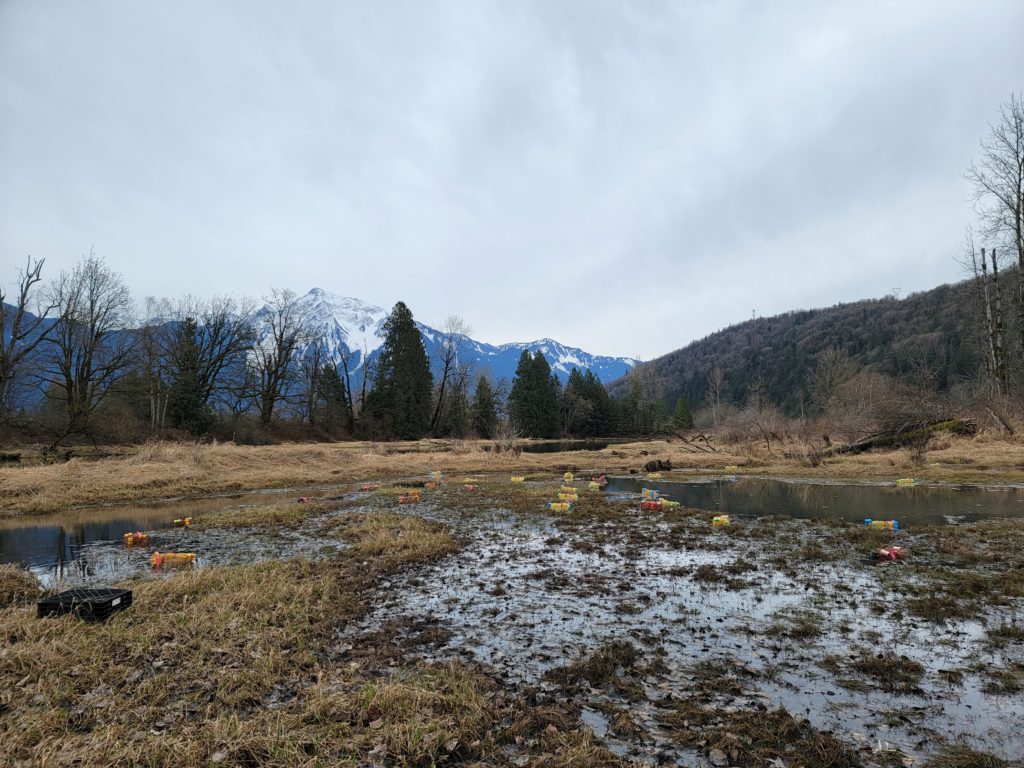
One Saturday morning, the South Coast Conservation Field Crew drove out to Agassiz for a workshop on surveying amphibians, led by Aleesha Switzer from the Fraser Valley Conservancy. The Fraser Valley Conservancy is a leader in restoration efforts for the Red-listed Oregon Spotted Frog (Rana pretiosa). The species is endemic to the Pacific Northwest, ranging from BC down to Central Oregon.
They started by learning about the difference between frog and salamander egg masses, both of which are found in shallow water in wetlands. Frogs lay their eggs individually, with each egg clearly discernible, stuck together and often wrapped around a protruding object like a twig, while salamanders lay their eggs within a single gelatinous blob. Studying the presence of egg masses allows us to assess the future health of an amphibian species’ population. The Field Crew then set out to study identification of different frog species. Oregon Spotted Frog can be identified by a brown pigment with green, yellow and red spots, eyes set back on its head and horizontal pupils. They also looked for the Northern Red-Legged Frog (Rana aurora), which can be identified by its less protrusive eyes. The Crew also set out to observe frog egg masses, carefully paddling through the shallows in search of conspicuous blobs.

Increasing development of wetlands has reduced the Oregon Spotted Frog’s habitat, leading to the species’ endangerment. The frog has also been affected by human factors like agricultural land conversion, resource extraction and hydrological alterations. Urban swamps are prone to pollution from industrial and urban runoff, affecting the health of egg masses, and invasive species like American Bullfrog can outcompete the Oregon Spotted Frog in its own ecosystem. Federal and provincial recovery efforts call for conservation measures to protect genetic diversity and support frog breeding. The South Coast Crew surveys for amphibian egg masses each year on NTBC lands, as well as removing invasive aquatic plants to restore vital habitat to insure healthy population numbers. Protecting and conserving habitat is the best way to ensure that these species thrive in the future.

The Fraser Valley Conservancy is a land trust based out of Abbotsford. The organization currently owns six properties that it has protected for conservation, and planted more than 4,200 trees and shrubs in 2021 alone. Many of their water-based conservation efforts have focused on protecting frog populations, including the Oregon Spotted Frog and Western Toad. Notably, many of its efforts have been concentrated on controlling populations of the American Bullfrog, which can be invasive if left unchecked. The American Bullfrog is a species that can outcompete the Oregon Spotted Frog, resulting in decreasing egg masses.
The Nature Trust would like to thank Aleesha and The Fraser Valley Conservancy for this training session and the opportunity to improve our own conservation methods.
